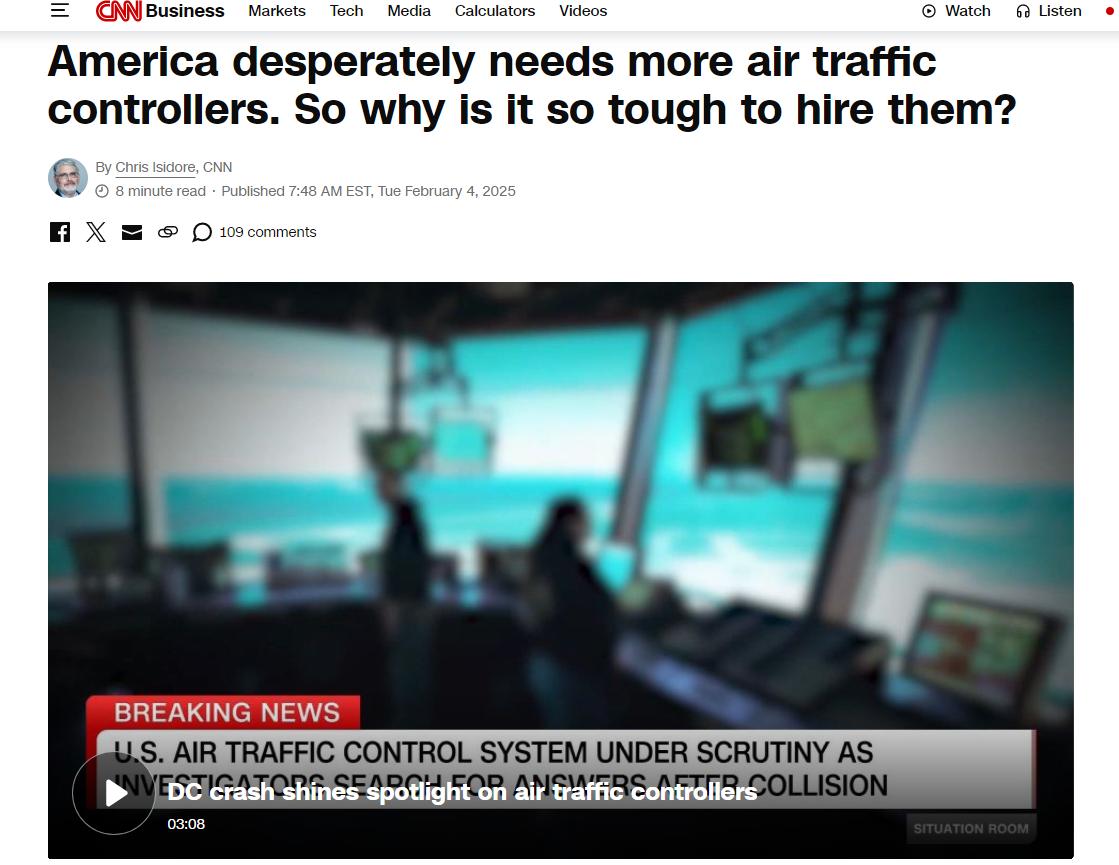Recently, CNN published an article titled “America desperately needs more air traffic controllers. So why is it so tough to hire them?” from Chris Isidore.

Screenshot of the news webpage
According to the article, the US air traffic control system has been stretched nearly to its breaking point by a decades-long staffing shortage. It’s causing problems not just for the air traffic controllers that remain but the flying public at large. And it won’t get better any time soon.
Below is the main content of article:
The Federal Aviation Administration, which runs the air traffic system, stepped up the pace of hiring in 2024 under President Joe Biden. But even though 2,000 qualified applicants were hired last year, they might only just barely replace the 1,100 who left the job either through retirement or due to the heavy toll the stressful job takes on those who enter the field.
That’s because nearly half of those hired in any given year will wash out of the program before they get to actually control aircraft after about three years from their initial start date.
So even with an increase in the pace of hiring, it could take as much as 8 to 9 years to reach full staffing, according to Nick Daniels, president of the National Air Traffic Controllers Association, the union representing 10,800 certified controllers across the nation. He said that 41% of the union’s members are working six days a week, 10 hours a day, just to provide a staffing level that still isn’t adequate. Those 10,800 controllers currently on the job are filling the 14,600 positions needed to meet the current demand.
“We’ve been raising the alarm on this for years on end,” Daniels told CNN. “We need air traffic controllers. We need maximum hiring, so that these stresses and pressures can be taken off of us who are holding the system together today.”
“If we’re going to recruit the best and brightest, we have to make this job (one) that people want to do,” he said.
Anonymous reports to NASA’s Aviation Safety Reporting System showed at least 10 submissions by controllers that included concerns about staffing, work schedules or fatigue in the last year alone.
“We have been short staffed for too many years and it’s creating so many unsafe situations,” one controller in Southern California wrote last year, recounting how a small aircraft requesting assistance could not be helped due to workload issues. “The FAA has created an unsafe environment to work and for the flying public. The controllers’ mental health is deteriorating.”
So, shortage is not only due to the rigorous standards that make it difficult and time consuming to fill the pipeline with new controllers, but the stresses, demands and hours controllers must work are leading to an attrition rate that makes it difficult for the new hires to make a dent in the shortage.





